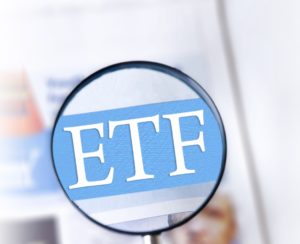Retirement: “safe income”: stocks being favoured in current market conditions
In our current market, investors are looking outside the ‘norm’ of traditional investments to gain access to the returns which once flourished in our portfolios. This is specifically the case for retirees who have in the past relied upon strong income returns from fixed interest income investments such as bonds and term deposits.
For many of us, we (Australians) traditionally are dividend focused investors and more often than not, invest a significant amount of our overall portfolios funds in banks and blue chip stocks early in our investment horizon whilst changing the focus into bank term deposits and bonds later down the track, as we approach and move into retirement. A shift has occurred in recent years with many investors seeking alternative means of income for their portfolios as banks continue to feel the squeeze of interest rates being stagnant. We will probably see these low interest rates remain until at least the later part of 2017. This may be motivated earlier by the growth of America should new elect President Donald Trump’s policy yield (for the US) the growth promised over his campaign.
This financial decade has spotted a lot of ‘firsts’ in the market as a whole (both in the Australian and International/Global markets). The Global Financial Crisis (GFC) and its continued pressures on markets and stock volatility alike have led to investors looking towards long-short style managed funds as well as alternatives style investment funds. Alternative investment funds differ from the traditional asset classes and aim to seek returns in non-traditional style investments (such as infrastructure, utilities, derivatives, real estate and high net worth equity companies).

Many alternative investments have high minimum investments and fee structures which make them prohibitive for some investors when compared to the large array of investments options available today (for example, mutual funds, exchange-traded funds (ETF’s) and many others). One factor which must be mentioned when discussing alternative investment funds is the issue of liquidity as many of these funds have low liquidity compared to traditional style assets (equities and cash) due to the type of assets they hold. An example to strengthen this point is that it’s often harder to sell an 80-year old bottle of wine compared to 1,000 shares of Apple, due to a limited number of buyers.
Alternative investments can help provide diversification to a portfolio as they typically have a low correlation with standard asset classes (i.e. as one investment asset class rises in value another will decrease in value). Although they may help provide diversification when effectively utilised as part of a portfolio’s construction, the nature of this investment class shouldn’t be overly protruding and should be used in moderation – aligned to your investment risk profile and time horizon. Investments in tangible assets such as gold and oil also provide an effective hedging instrument against rising inflation, largely due to their negative correlation with the performance of stocks (equities both Australian and International) and bonds.
Without giving consideration to the taxation and investment cost implications which are often disregarded by individual investors anyway, we must continue to assess the market, its volatility and how investment types may be suitable for differing market conditions. Whilst interest rates remain low in this market alternative investments may be suitable to provide investors with an income and accompanying growth. However, should interest rates rise and bond yields rise, it may no longer be viable to continue using such an investment approach. A diversified portfolio will 9 times out of 10 outperform an asset class specific approach.
In the case of the big blue chips, the S&P/ASX 200 dividend payout ratio has increased from 55% in 2010 to 80% today. Paying out more of a company’s profits via dividends may be lucrative for investors to sustain their capital and live off the income in retirement however, it comes at the cost of company growth – meaning the company retains less for growth. Therefore, investors are paying high prices for bond-like returns, but are adopting equity market risk. History has always punished this strategy.

Assessing a company’s valuation without all the facts is like flying a plane at night without instruments to tell you where you are going and in what direction. Whilst alternative investments may seem lucrative in this current market, much of the high valuations are largely due to low interest rates as these companies have little or no equity on their balance sheets – so valuations are boosted in such market conditions.
Many of us have changed our investment approach in recent years and headed towards buying equity stocks with the notion of income generated behind our decisions. We are now faced with an environment where the most expensive companies are those with little growth or a lot of debt, or both. Low interest rates corrupt everyone’s sense of risk – conservative investors sway towards purchasing equities rather than waiting out the volatility in the market. This type of cyclical investing (investing differently at different stages in the market curve) is behaviour driven and may have significant end results on your retirement wealth.
Portfolio construction, maintenance and ongoing wealth management are all areas which we focus on when managing our client’s wealth, whether it be investment or superannuation (accumulation or pension) based. If this is an area you wish to discuss then contact us at Total Advice Partners on (07) 3284 7875 to meet with one of our financial planners.

